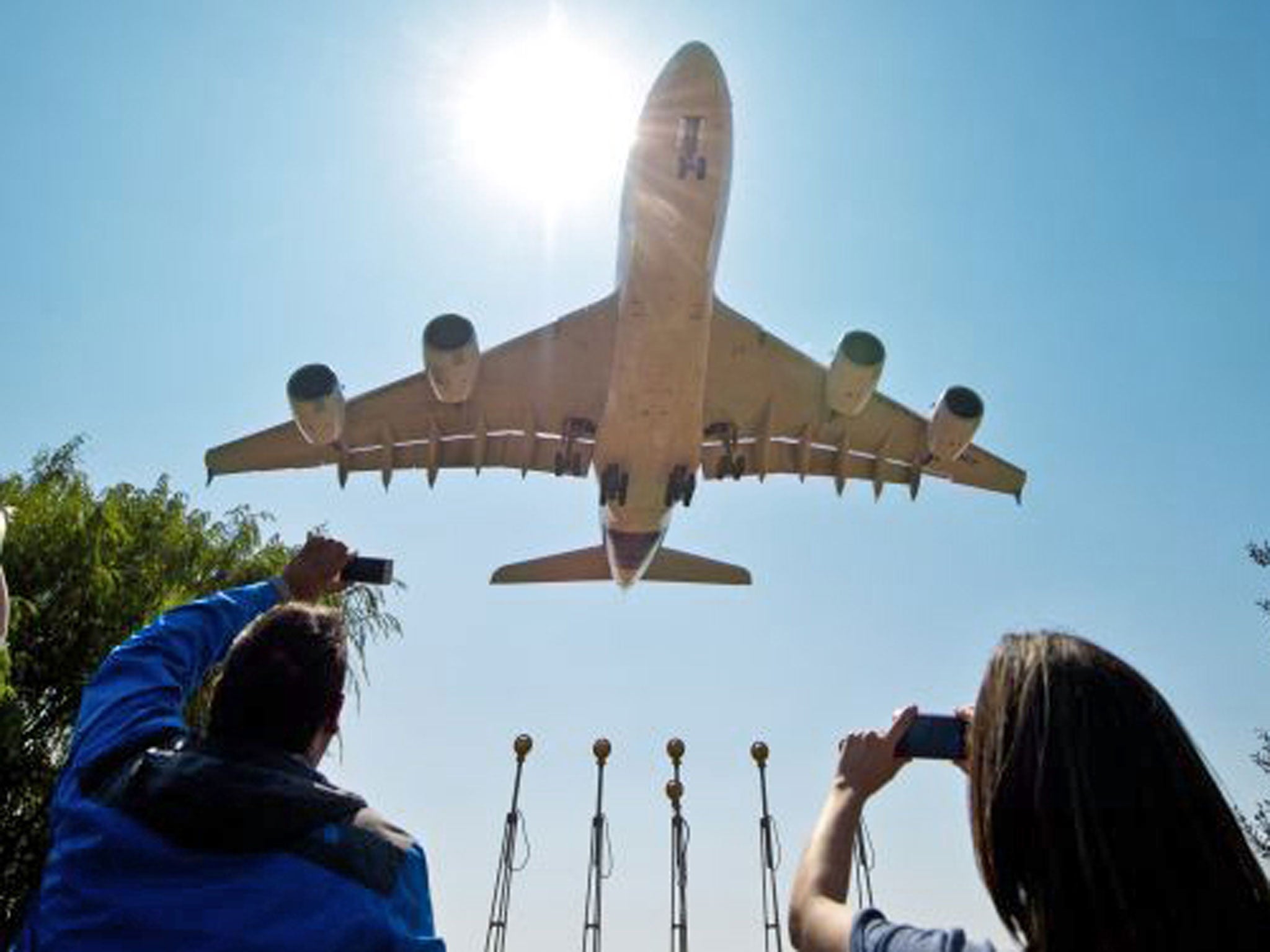Simon Calder: Why the biggest plane in the world isn't right for the busiest route
The man who pays his way

"Will the Airbus A380 fly from Heathrow to New York JFK? No one I ask knows." So writes the legal heavyweight Professor Dominic Regan.
Now, I am not (yet) in charge of which airline flies what plane where. If I were, either Virgin Atlantic or British Airways would deploy Boeing's ultra-long-range Dreamliner non-stop from Gatwick or Heathrow to Lima, easing access to Peru for UK travellers. But I confidently predict that the A380 "Superjumbo" will never fly in regular service between Heathrow and New York.
Consider the plane. Many travellers regard the A380 as the best way to fly long haul, thanks to the sense of space and tranquillity. I have eagerly paid a premium (OK, only around £50) to fly on the 21st-century jet rather than the ageing 747, which underneath all the modern avionics remains a 1960s design.
Passenger preference is one reason why operators such as Singapore Airlines and British Airways fly them. Another factor is the economies of scale. Costs per seat-mile are lower than for other large aircraft. Emirates has ordered far more A380s than anyone else as it aims to become people-carrier for the world. The Dubai-based airline has almost 50 in its fleet, with about 100 more to come from the Airbus factory in Toulouse. (By comparison, BA has ordered just 12.) All five daily Emirates departures from Heathrow to Dubai use A380s, with one each also from Gatwick and Manchester. The airline uses the Superjumbo on anything from the 500-mile hop between Dubai and Kuwait to the 8,300-mile stretch between the Gulf and Los Angeles.
Heathrow to JFK is the busiest intercontinental air route on Earth, with around 6,000 passengers a day. Surely it is the natural route for the world's biggest airliner? BA's configuration carries 469 passengers, 170 more than the Boeing 777s and 747s currently used. The Superjumbo extracts the maximum value from "slot-constrained" airports, of which Heathrow is the most extreme example. Yet BA has never expressed any interest in deploying it. Reason: the business traveller who bankrolls the route is more interested in frequency than scale. He or she wants to fly at a time that suits them.
Starting on 18 May, British Airways will have nine flights a day from Heathrow to JFK, offering a westbound departure roughly every 90 minutes between 8.30am and 8.05pm. Coming back, there are evening flights from JFK as little as 20 minutes apart. That schedule is ideal for high-value executives who travel on flexible tickets and are unsure what time they will get to the airport: if there is a seat is available, and there usually is, they just step aboard the next flight. Decant the passengers from three of the existing jets into two A380s, and you diminish the perceived value of that offering.
But relax to LAX in one
Where British Airways thinks the A380 makes sense is connecting Heathrow with Los Angeles, Hong Kong and Johannesburg. All three routes are 11 hours plus, during which the extra comfort of the jet will be fully appreciated, particularly by business travellers. Crucially no other airline on these links has the Superjumbo, giving BA a competitive edge. Frequency is not highly valued on either route. From Hong Kong to Heathrow, for example, the first departure is at 11.15pm, with the other half-an-hour later.
From September, BA is also going to operate the A380 between Heathrow and Washington DC. Unlike New York, the airline has only three flights a day. The bigger plane is a neat way of adding capacity without increasing frequency.
Paying for the privilege
The only time I expect to see the A380 on the Heathrow-JFK route is perhaps for the odd one-off "celebration flight," like when Emirates despatched the XL-sized plane to Glasgow to celebrate 10 years of services between there and Dubai. Yet BA is only one of half-a-dozen airlines on the Heathrow-JFK run. So what is to stop someone else launching the A380 on the route? Well, the only other carrier with an order for the European-built aircraft is Virgin Atlantic, which does not expect its first until 2018 and is also likely to go for longer routes.
Air France and Lufthansa are the two leading European airlines with A380s and could happily operate London-New York. Each has slots at Heathrow, to shuttle to and from their hubs in Paris, Frankfurt and Munich. But on the one occasion that Air France ventured into the UK-US market, with a daily Boeing 777 link between Heathrow and Los Angeles, it retired hurt after a single loss-making summer.
Both Air France and Lufthansa deploy the A380 between their hubs and New York. Given that the flying time is hardly any longer than from Heathrow, that might not make sense. Except that the business model is very different. From Paris or Frankfurt there is nothing like the same demand as from London, particularly among executive travellers. There is, though, much more transit traffic with travellers connecting at their hubs from a range of European airports. BA certainly fills some seats on the A380 with transit passengers – but its main aim is to earn a premium by attracting non-stop travellers.
Meanwhile, Professor Regan's best plan for flying to New York on the jet is to head for Paris first. But without the price competition London-New York enjoys, he will pay for the privilege in money as well as time.
Click here to view the latest travel offers, with Independent Holidays.
Join our commenting forum
Join thought-provoking conversations, follow other Independent readers and see their replies
Comments